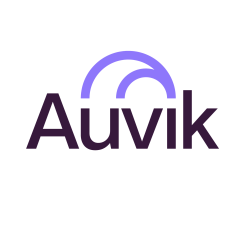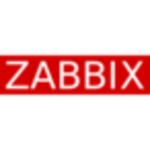What is our primary use case?
Our use case is to monitor and maintain not only our corporate headquarters, but all of our remote sites and embedded sites across our company.
It's a SaaS application.
How has it helped my organization?
It has definitely helped us to put out fires before people even know there is a problem. It helped us to discover a lot of network problems with one of our buildings so that we could have it rewired.
We're a pretty small team, there are four of us in IT. I'm the primary network person and then I have a backup. Auvik does help him and other members of the team, and our developer. We all wear multiple hats, but we have our specialties. It helps everybody on the team when I'm not able to get to something, and somebody has a network issue. It helps everyone else to diagnose the issue if I'm tied up working on something else.
The solution has also decreased our mean time to resolution by at least half. We're able to very quickly see what's going on. We can see the connections within the image it shows, but we can also deep-dive quickly through the TrafficInsights and the logging. Even if you quickly go ahead and make a decision to reboot something to restore service, you can still capture logging and things that would normally be on the device, so that you can quickly figure out what happened. That helps with root cause analysis for after the fact so that you can come up with plans to avoid the issue going forward. That's the kind of thing we didn't have before. Before we'd have to make a quick decision regarding, "Do we troubleshoot this to figure it out or do we go ahead and just reboot it?" Nine times out of 10, that'll probably resolve your issue.
What is most valuable?
It's a network monitoring system, so being able to see things like the hardware lifecycle, if our equipment is up to date, if connections are broken, or whether there are physical line breaks, is helpful. We're able to determine connectivity issues. We can monitor pretty much anything that is network-related.
It's fairly easy to use out-of-the-box.
We also use the TrafficInsights feature and it has been a huge help to us. Using it, we can see interface utilization, both WAN-facing and LAN-facing. We can see what kind of bandwidth we're using and what is using that bandwidth: what type of application, what host is using it, and how long it's been using it. And the historical data of TrafficInsights is great as well.
With TrafficInsights, we can obviously tell when our backups are running, because we run nightly backups and hourly backups. We can see the performance utilization of our backup server. And we can also tell, end-user-wise, what applications end-users are using and how long they're using them for. And while we don't necessarily know what they're doing, at the same time we kind of do know what they're doing. We know what websites they're going to, so we understand how they're utilizing the internet connection.
When it comes to identifying where we are experiencing performance issues using the TrafficInsights feature, I'm actually working on that right now, for the comptroller of our company. It's mainly about trying to get her to call me when it actually happens so I can log in and see it. This is the first time I've used it to diagnose an actual connection problem.
Auvik's network discovery capabilities are pretty fast. The biggest thing is that you have to commit to SNMP. You have to turn that on so that you can get the layer below. From a ping perspective, it does a great job of discovering devices on the network, once you have pointed it at the right entry point. You have to commit to a few protocols to open up the network so that it will get to the levels below the surface, where you're actually pulling information, data, logging, et cetera. If you really want to manage the network, you do have to open up a few protocols.
It also automatically updates network topology. It has a great map view of everything so that you can see all the connection points and the health of a connection. You can say whether it's a ping or if you have the right protocols set up so that you can pull in information. It's very easy to quickly see, from a graph, where you need to possibly address setup issues. The other thing that is great about the highlighting is when you have unknown devices on the network. They will come up and you can quickly filter for them in a very easy-to-use table. That way, you can tackle if they really are unknown devices or if somebody is trying to do something they shouldn't.
What needs improvement?
It's rare, but sometimes the actual application itself can be a little slow. That's because of the amount of data that it is pulling from remote networks. That has been my only complaint with it and it's really not even a complaint. But if the speed of the application were to improve, it would help a lot.
For how long have I used the solution?
We've been using Auvik since December, so it's been about six months.
What do I think about the stability of the solution?
They do really well with the availability of the application. When they need to take maintenance windows, unless it's emergency maintenance, which I've only seen one time, they always have a backup. That means it's pretty much available all the time. We've never had a problem with it going down, ever.
What do I think about the scalability of the solution?
It's pretty scalable. It's always easy to add on another visible device. Depending on how you decide to set up your network, you're going to pull in anything that isn't a piece of that main entry point. From a pricing standpoint, that part's good.
How are customer service and technical support?
Their technical support has been crazy good. A challenge for us, if we wanted to consider leaving the product, is just how good they are. Not only were they engaged from the beginning—even as easy as it was—but they guided us through and showed us different tools. They gave us multiple workshops. And even after those workshops we've had quarterly follow-up.
They really want you to use the product. It's not even a partnership issue. Rather, you can just tell they love what they do. It's definitely one of the better relationships I've come across in the last 20-something years of IT. That made the decision to go with them really easy for us. We felt really good about it after as well.
They're also very open to feedback and to looking at what that can lead to in terms of development and enhancing of their product. They've done so much reaching out to us. We have nothing but great things to say about them.
They definitely work with us. They don't just say, "Here, we sold you a product." They want us to get the most out of it, and that's what changes it to a partnership-type relationship.
Which solution did I use previously and why did I switch?
We didn't have anything before Auvik, and it's helped out immensely.
How was the initial setup?
There are a couple of tricky things to set up. You've got to know the equipment that you're running, but once you know that and you work alongside Auvik and use their Knowledge Base, it's extremely easy to set up. We had ours up and running in a day and we had it fine-tuned in a couple of months.
As a cloud-based solution, other than troubleshooting, there's barely any maintenance on our side. A lot of it is just the initial setup, such as getting a site running, and even that doesn't take that much time. You can have a site up and running and loaded in 30 minutes or less, if you know what you're doing. It's very straightforward, very easy to use, a lot of it is point-and-click. Once you've set up a few sites, you tend to know it like I know the back of my hand. It's super-easy for me to set stuff up.
What about the implementation team?
We worked with an Auvik technical engineer. They had a deployment roadmap that we followed, and typically, every other week we were going through the different features and functions. We would set up a meeting to go over, for example, setting up SNMP and SSH login and turning on TrafficInsights. They helped us tune it to the way that we needed to use it.
What was our ROI?
The time-to-value ratio, for us, was day one. We had nothing before Auvik, so as soon as we got the product up and going, we were already seeing the networks through the discovery services. After a session of a few hours, we started to understand the SNMP and how to set things up and pull in a lot more of the logging and alerting, detailed information regarding the traffic. Within two to four hours, on top of the discovery stuff, we were off to the races. We quickly discovered versions and where we were from an asset-management perspective. We could see older equipment that we had, and we were able to quickly target a hardware refresh. The time-to-value was almost instant.
What's my experience with pricing, setup cost, and licensing?
It's great for small businesses, but when you start reviewing the pricing model, depending on how many devices, and what sub-devices you decide to pull in, it can get tricky as far as the pricing goes.
For us, as a mid-sized organization, it works great. There are some functions and features that you might get from a Meraki or from SolarWinds that, if you have a more robust networking team or a security team, might be useful, and Auvik might get passed over for an enterprise-grade solution. That said, Auvik is phenomenal for us. It's great for what we use it for. It gives us a very powerful tool at a very cost-effective price point for our size of an organization.
We have 20 to 25 billable devices. In terms of endpoints, we at least have 250 machines and there are a bunch of printers that we've got alerting on, and other miscellaneous devices that are connected to networks.
The challenge might be for a more robust network, where you start putting in a lot of billable devices. There's going to be a point where this solution would potentially be more expensive than some of the enterprise solutions, just because of the billing structure. Auvik could potentially price itself out of large organizations because of how it does billable devices and lose out to solutions that not only have more robust services but that price things out differently.
Which other solutions did I evaluate?
We have looked at a couple of open-source, network monitoring solutions, but they weren't as robust as this. NinjaRMM was one of the solutions we looked at. We pretty much just chose Auvik and moved forward with it.
The strength of Auvik, and many of the tools at its price point, are the out-of-the-box monitoring capabilities. Where Auvik pulls ahead is when you set up SNMP and you're able to scan the layer details and information from all the devices underneath. That's when you're really going to start getting more of the robustness it offers, whether it's TrafficInsights or it's the asset management that comes from having a network monitoring tool. That's definitely where it comes out ahead. Ninja RMM, for example, is just giving you a high-level inventory of what it sees on the network. It probably wouldn't give you much more than a Lansweeper or the like.
What other advice do I have?
My recommendation is that even if you have network experience, their product is vendor-neutral, so pay attention to the way that they do things. Even though it is specific to them, it's very easy to get used to the way that they have everything laid out.
Take advantage of the training sessions and of all the meetings. Go through the certification course that they have and pay attention to the Knowledge Base. Everything that they have done shows that they actually care about what they're doing and what they like doing. They are there to help. They will bend over backward to help you.
It does configuration backups and it takes them automatically. I also do those on the side as well, manually. In the event that something does happen, it's always better to have a backup. We've got backups for everything. We haven't come across any issues where we've had to use the configuration backups yet.
It does its job well. I would rate it at nine out of 10. I'm a little bit more network-driven, so a lot of the things it can do are fun, for me. I probably enjoy it more than anybody else on the team.
You can definitely tell that this solution is younger than some others. It definitely knows its niche. It gave us everything we needed, to the point where I could rate it an 11 out of 10. But if I start to look at SolarWinds and some of the other names out there, some integration capability to do all the clicks within the service would probably be the next improvement that I would want. But if you ask for those, it may price itself out of where it's at now, which is a really great spot.
I don't see us leaving it for quite some time for sure.
Which deployment model are you using for this solution?
Public Cloud
If public cloud, private cloud, or hybrid cloud, which cloud provider do you use?
Other
Disclosure: PeerSpot contacted the reviewer to collect the review and to validate authenticity. The reviewer was referred by the vendor, but the review is not subject to editing or approval by the vendor.
















